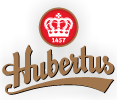Step by step Pilsner production
Barley selection
Only the best locally grown barleys are selected for brewing our unique pilsner beer. These are stored dry until required.
Malting
Prior to soaking, all the barley is washed to reduce the risk of foreign matter being included in the brewing process.
The grain is soaked in water to allow the water content of each seed to rise, thus providing the correct conditions to allow for germination. The swollen grains are then spread on the floor of the threshing floor for a period of 5-7 days to allow for germination, referred to as ‘green malt’.
Drying
The green malt is dried in a kiln at a temperature of 80-85 degrees centigrade. This stops the germination process and allows the excess water to be removed from the grain. This process is traditionally referred to as ‘kilning’.
Milling
The dried green malt is then milled in to a produce a course powder not un-similar to a fresh ground coffee in its consistency.
Water
Water is draw from the well at the brewery which has a ph. of 4.5 to 4.8. This acid pH. gives the finished beer a soft flavour on the pallet and adding to the complex malted flavours. (Traditional British ales generally use Burtonised water with a slightly alkaline pH.)
Mashing
Water at 37 degrees Celsius is added to the milled grains in the mash tun to produce an ‘infused mash’. Heating the infused mash allows for the complex starches contained within the malts to be broken down into simpler sugars, thus allowing for better fermentation. A double mashing method is used to further convert the starches to sugars.
Straining
The mix is the strained to remove the solid material from the clear liquid (wort). This process is often referred to as lautering.
Brewing
Saaz hops are added to the wort and boiled for two hours. Two lots of additional hops are added to the mix at different times to make a ‘hot hopped wort’.
Fermentation
The hot wort is then cooled to around 6 degrees Celsius. A unique yeast is added to the mix which allows for bottom fermentation to take place in open vessels for a period of 8 to 10 days. The fermentation allows for the development of alcohol to take place and thus releasing the carbon dioxide. A ‘young beer’ is the result.
Maturation
The young beer is cold stored in sealed vessels at 2-3 degrees Celsius to allow the flavours to mature for up to 90 days. (In contrast, ales are stored for between 20 to 30 days). This process is often referred to as lagering (the German word for cold storage).
Diatomite filtration
The mature beer is then filtered to remove most of the yeast and any other particles that may still remain in the beer.
Bottling
The beer is finally bottled and put into kegs for distribution to the local market and overseas.

